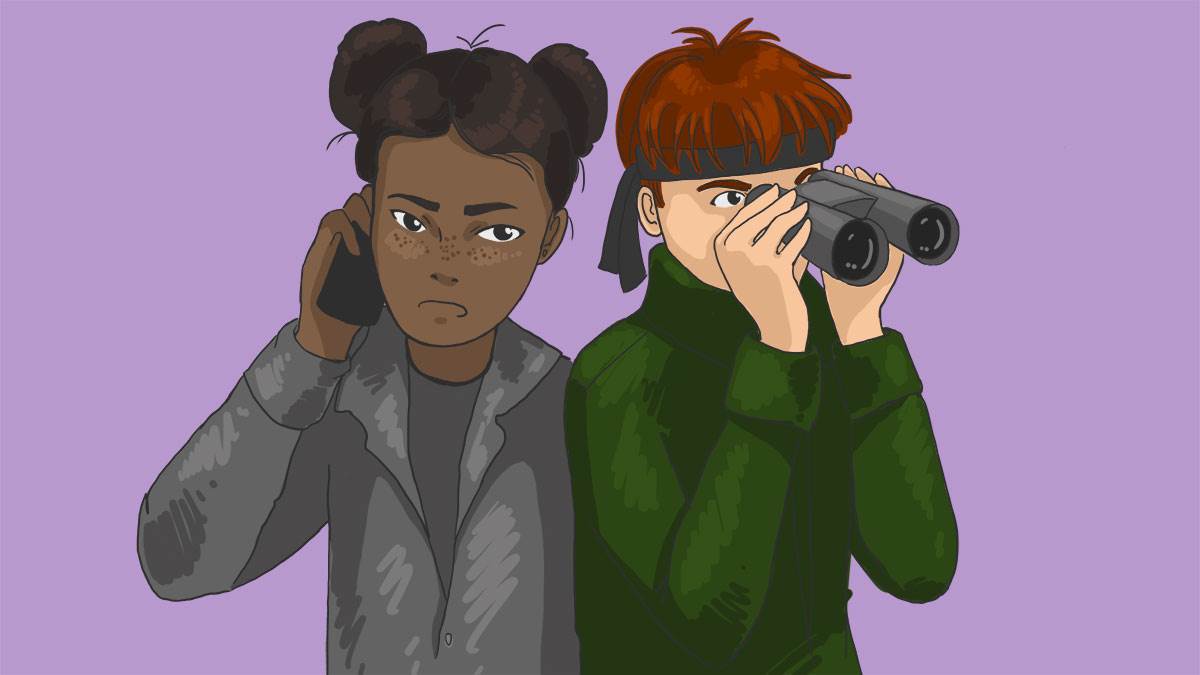5 top tips to help children spot fake news
Published on: 04 June 2023
Breaking News author Nick Sheridan explains some ways to ensure that children think carefully about information they read or see.
 Illustration: Emily Rowland
Illustration: Emily Rowland
It’s NEVER been more important to be able to tell the fact from the fiction on our televisions, on social media and out in the real world, ESPECIALLY when you’ve got little people in the house.
In my book Breaking News: How to Tell What’s Real From What’s Rubbish, I explain a couple of different techniques that we can all use to make sure that we don’t fall foul of misleading information, whether online or in real life. These techniques can be useful for adults when chatting to the young people in their life about ‘fake news’.
What is fake news?
The first thing to do when having this conversation, is to define exactly what we mean by FAKE NEWS. I describe it as ‘untrue things that are spread online’ – that could be a misleading headline, an edited photograph, a video pretending to show something it doesn’t or even a politician telling a bare-faced porky on the telly.
It’s important too to remind kids that fake news fools everyone sometimes – it doesn’t mean they’re especially gullible if they fall for something untrue. Journalists like me get fooled by it all the time. So do teachers! So do parents! All that matters is that we try our best to sift out the real stuff from the rubbish stuff, and accepting that sometimes we might have the wool pulled over our eyes.
Searching for clues
I explain to kids that we need to behave like DETECTIVES, and use a few simple steps to sort the real from the rubbish:
-
First of all, they should use that pink squishy thing between their ears: their brains! Their brains are fantastic tools that can send lots of very helpful questions whizzing out of their mouths: ‘does that sound likely?’ ‘where can I find more information about this?’ and ‘where did you hear about this story?’ Asking curious (AKA: NOSY) questions about something young people are being told is the most important tool in their toolkit. That last question is PARTICULARLY important, and it leads us nicely on to our second step!
-
I tell kids that they should look at where the information is coming from – what news reporters call the ‘source’ of the story. If someone you’d never seen before rushed into your school and shouted that the roof was on fire, you might want to know who they are! If they were wearing a mask that hid their face, then you’d probably be even MORE suspicious. That person would be ANONYMOUS – and we all need to be extra careful when an ANONYMOUS person gives us a piece of information. If we don’t recognise the source of a picture, video or message, then MAYBE it’s because what they’re showing us is FAKE.
-
Young people should think of an emoji that would sum up the way they feel after seeing or reading something. If that emoji is a NEGATIVE emotion, like sadness, worry or even anger – then maybe, just maybe, the source WANTS them to feel like that. Sometimes the people who spread fake news blame groups of people for the problems that we face as a society. If what they’re saying is placing blame on a particular type of person for a particular problem, then kids should investigate further.
-
I encourage kids to assemble their fellow detectives! They should talk to friends, an older brother or sister, their parents, their teacher or another adult that they trust. They might have some other information that can help the young person make their FINAL DECISION on whether or not to believe what they’ve been told. And if a piece of information makes them feel a little sad or upset, it’s more than OK to tell someone they trust and talk to them about it. And every now and then, I always remind them, it’s ESSENTIAL to take a break from the barrage of information heading their way. The news will still be there tomorrow.
- Finally, it’s good to bear in mind that fact books tend not to contain fake news! Non-fiction books are researched thoroughly and have a team of people fact-checking before they go to print. If you’re unsure about something on the internet, perhaps check it in a book in your library.
Breaking News: How To Tell What’s Real From What’s Rubbish is available now.
Topics: Non-fiction, Politics/human rights, Features





